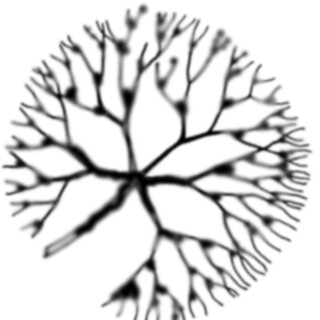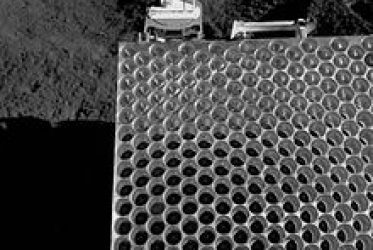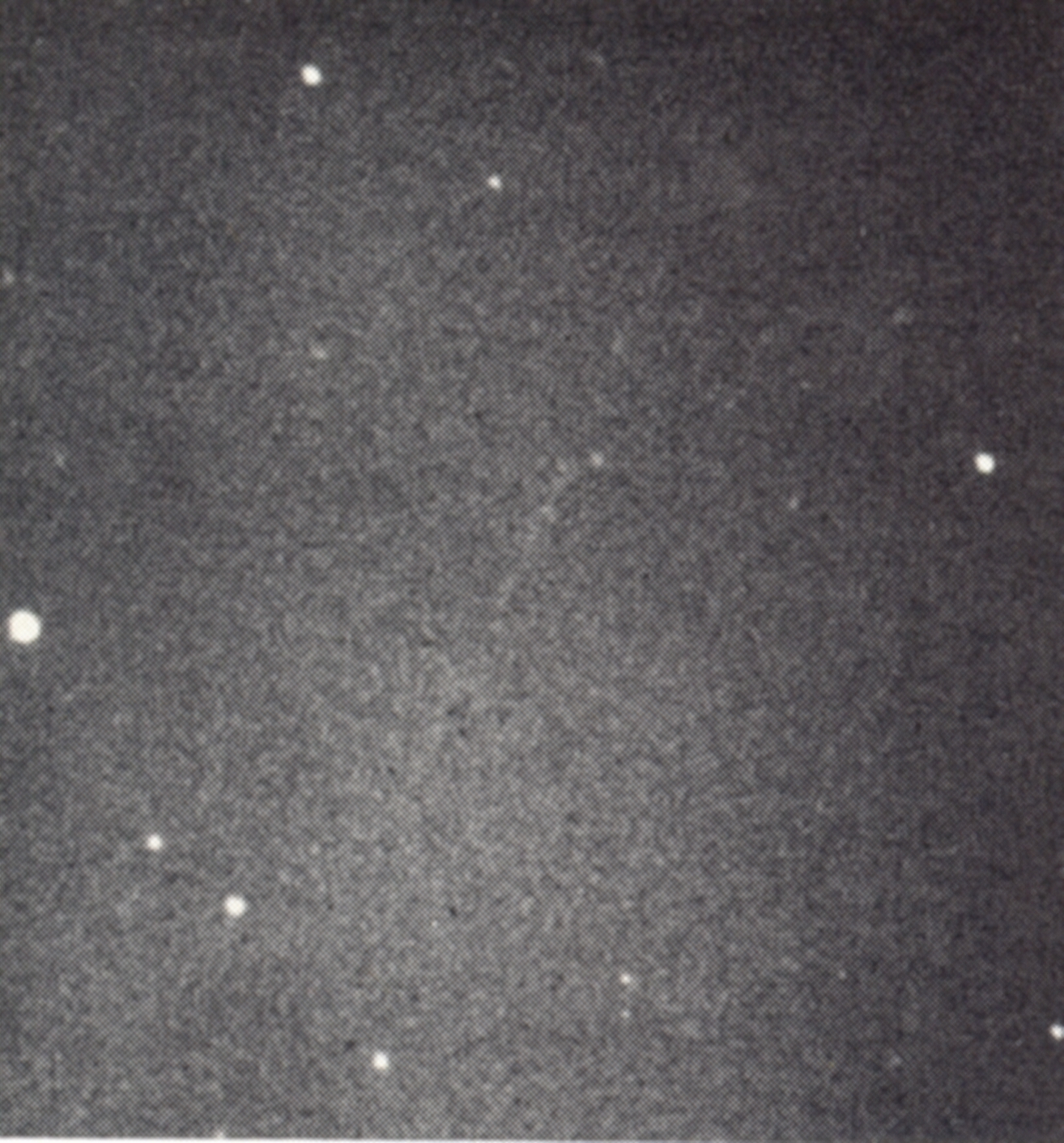What is an orbit, anyway? And what do we mean by freefall, microgravity, and weightlessness?
To answer these questions, first understand the difference between mass and weight. Mass is a property of all (ordinary) matter, and can loosely be thought of as the amount of stuff in that matter. A bucket full of iron nails has a lot more mass than the same bucket full of wooden pegs because there are a lot more electrons, protons and neutrons in every atom of iron than there are in the carbon and other atoms in wood.
All (ordinary) matter has its own gravity, which is just its attraction to all other matter. A bucket of nails weighs more than a bucket of pegs because the earth pulls harder on it–because it has more mass crammed into the same space, and mass is what gravity pulls on.
Crate up the bucket and launch it into space and it still has the same mass, so why does it float around and get nails into everything? It’s still being attracted to the earth, isn’t it? So where did all its weight go?
To understand this, you need to understand inertia. Ever play air hockey ? Or ice hockey? Or knurling? Set the puck flying and it keeps going until it hits something. Give it a tap, and it creeps along until you reach out and hit it again, or till it strikes something, or till the slight friction against the table (or ice or lane) brings it to a stop. And once it stops, it’ll sit there till the cows tip over unless you go get it. Why? Because matter is lazy, that’s why.
No, I don’t mean matter is living in it’s mother’s basement playing video games all night. I mean it likes to keep doing what it’s already doing until something makes it change. If it’s still, it will remain still until pushed. If it’s moving, it will remain moving in a straight line until acted upon. This property of lazyness is called inertia, and it totally makes sense if you think about it. After all, if a bit of rock is hurling through space smoking weed at 82,000 kilometers per second, it’s not just going to stop, put on a tie, and go out for interviews at Starbucks. Why should it?
Any change in an object’s motion — whether speeding up, slowing down, or changing in direction — is called “acceleration.” We sometimes say “deceleration” to mean a reduction in speed, but in terms of physics, it’s just a type of acceleration–a change in the speed or direction of motion.
Inertia makes perfect sense–after all, why would an object speed up or change direction on its own? Except in everyday life, we don’t live in a hockey rink or in space. If we roll a ball through the garden, it rubs against the carrots and slows down pretty fast, so we think that’s normal. And it is, in the garden. But toss a cat out an airlock from the International Space Station, and it will go hurtling off in a straight line in whatever direction you tossed it (you sorry, cat-hating heathen). Except it won’t…because Earth is pulling on it…which brings us to orbits.
Sir Isaac Newton probably never got hit in the head with an Apple, but he was a pretty smart fellow. Three hundred years ago, he understood gravity and inertia and proposed this thought experiment: Say you climb up to the top of Mount Everest with a shiny new cannon. After negotiating the tip with your sherpa, you fire the cannon flat and level toward the horizon. What will happen?
Nothing, right? You fire the ball, it falls and hits some mountaineer on the head, lawyers are called, the usual. But if you pack more powder into the cannon, you can fire the ball further. Fire it far enough, and you can hit base camp. The faster the ball leaves the cannon, the further it will go, until eventually, the curvature of the earth starts to carry the ground away beneath the falling cannon ball.
What if you traded your magic beans for elfin gunpowder that lets you fire the cannon as hard as you like and send your projectile flying without any resistance from the air? Eventually, it would fly so far that the ground was carried perpetually away and the ball would circle the globe–forever.This is what we call an orbit, and we can actually do it in space where the air is so thin it takes months, years, or centuries to slow down our cannon balls, er satellites.
Objects in orbit still have the same mass they do on earth. The earth’s gravity still pulls on them (though not quite as hard, because gravity diminishes with distance). In fact, if you stepped on a bathroom scale while standing atop a tower as high as the International Space Station, you would weigh almost 90% of your normal weight on the ground. And so would all the steel and concrete in the tower, which is why it would collapse, so don’t do that.
But if you jumped off the tower, you would instantly be in free fall (which sounds a lot nicer than “screaming, oh crap! I stepped off the tower”). You would have no weight because the scale that measures weight would be falling along with you and would have nothing to push against but the chewing gum sticking it to your feet. You would not burn up (like a reentering spacecraft). You would fall through the near vacuum, speeding up due to gravity all the time and would eventually exceed the speed of sound before slowing down again in the thickening air. You brought a pressure suit and a parachute, right?
But why would you jump off the tower? It’s not like the ISS is about to crash into your bathroom. Crap! The ISS is about to crash into your bathroom! At 17,500 miles per hour. That’s gonna leave a mark!
Why so fast? Because the ISS is in freefall too. At 88.9% of normal surface gravity, it’s in what NASA likes to call, “microgravity.” It’s falling towards the earth all the time, and to keep from smacking into Disneyland, it’s been set moving in a straight line at 17,500 miles per hour. If the earth weren’t here, it would fly off in a straight line at that speed forever (ignoring a few dozen details that aren’t relevant here). But the earth IS here, and at 17,500 mile per hour, the ISS is flying away in a straight line at precisely the same rate it’s falling toward the earth. Freefalling. Weightless, but still with a lot of mass (the official mass of the ISS is 3.217 crap-tons).
The moon orbits the earth in the same way. The earth orbits the sun, the sun orbits the center of mass of the galaxy, and the galaxy orbits the disembodied mass of Donald Trump’s ego. It’s all the same.
So there you go. Did I leave anything out? Let me know and I’ll try to clear it up. Or jump over to my homepage and request some free scifi and I’ll send you, you know, some free scifi.





 1. We left retroreflectors on the moon, just like bicycle reflectors only bigger and not as pretty. Visit the McDonald Observatory or any other with the proper laser range-finding equipment and you can see for yourself that the laser energy returns when the telescope is pointed at the designated landing sites and does not return elsewhere.
1. We left retroreflectors on the moon, just like bicycle reflectors only bigger and not as pretty. Visit the McDonald Observatory or any other with the proper laser range-finding equipment and you can see for yourself that the laser energy returns when the telescope is pointed at the designated landing sites and does not return elsewhere.








